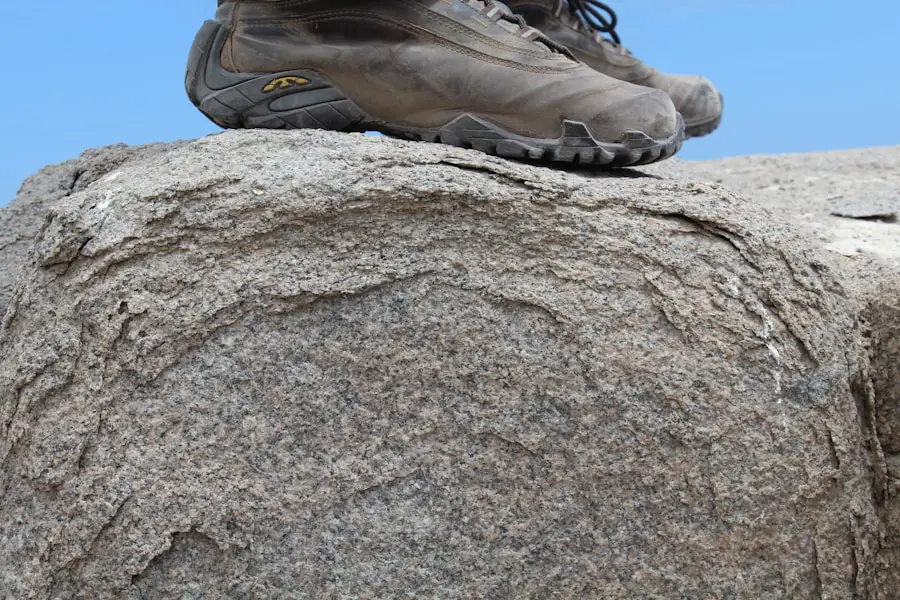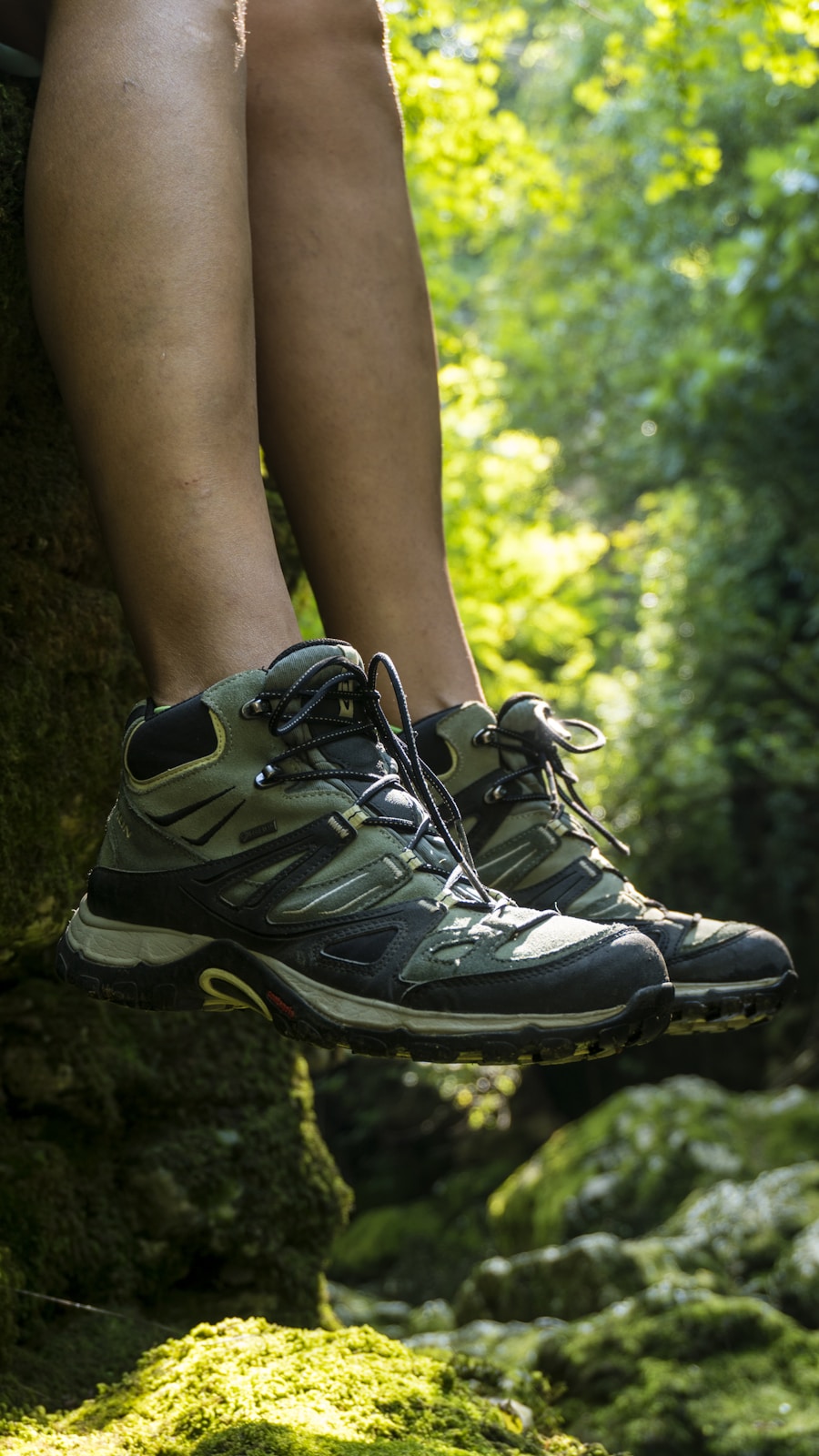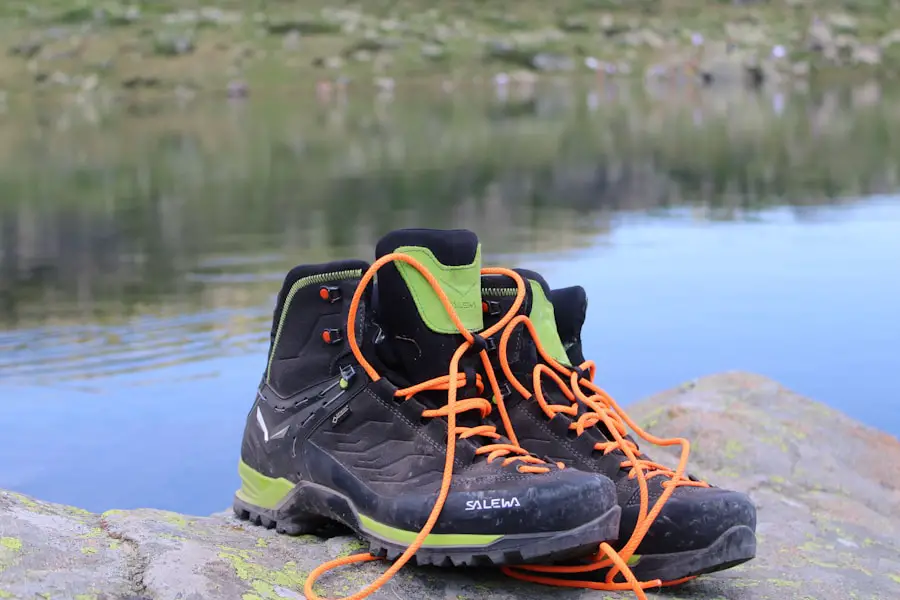Breaking in hiking boots is a crucial step for any outdoor enthusiast, whether a casual walker or an experienced mountaineer. The primary purpose of this process is to ensure that the boots conform to the unique shape of the wearer’s feet, thereby enhancing comfort and reducing the risk of blisters and other foot ailments during long hikes. A well-broken-in boot can significantly improve the overall hiking experience, allowing for longer treks without discomfort.
When boots are not adequately broken in, they can lead to painful hotspots, chafing, and even serious injuries that could derail an entire hiking trip. Moreover, breaking in hiking boots is not just about comfort; it also plays a vital role in performance. Boots that fit well and have been properly broken in provide better support and stability on uneven terrain.
This is particularly important when navigating rocky paths or steep inclines, where foot placement and grip are essential for safety. A boot that has molded to the foot can enhance agility and confidence, allowing hikers to focus on the trail ahead rather than on their aching feet. Therefore, investing time in breaking in hiking boots is not merely a matter of comfort; it is a fundamental aspect of ensuring a successful and enjoyable outdoor adventure.
Key Takeaways
- Breaking in hiking boots is important to prevent blisters and discomfort during long hikes
- Factors affecting break-in time include the material of the boots, the individual’s foot shape, and the type of hiking activities
- Methods for breaking in hiking boots include wearing them around the house, using thick socks, and gradually increasing wear time
- The duration of the break-in period can vary from a few days to a few weeks, depending on the boots and individual
- Signs of a properly broken-in boot include flexibility, no pressure points, and a comfortable fit
- Common mistakes to avoid during the break-in process include wearing new boots on long hikes, not wearing them enough before a big trip, and not adjusting laces properly
- Tips for a comfortable break-in process include using moleskin or blister pads, applying leather conditioner, and using a boot stretcher if needed
- Seek professional help if the break-in period is excessively painful, if the boots still feel uncomfortable after a reasonable break-in period, or if there are signs of poor boot quality
Factors Affecting Break-in Time
The break-in time for hiking boots can vary significantly based on several factors, including the materials used in the construction of the boot, the design, and the intended use. For instance, leather boots typically require a longer break-in period compared to synthetic models. Leather is a natural material that tends to be stiffer initially but becomes more pliable with wear.
On the other hand, synthetic materials often come with a degree of flexibility right out of the box, which can shorten the break-in time. However, this flexibility may not always translate to long-term durability or support, making it essential to consider the trade-offs. Another critical factor influencing break-in time is the boot’s construction and design features.
Boots with additional padding or cushioning may feel comfortable immediately but could take longer to mold to the foot’s shape. Conversely, minimalist designs that prioritize weight savings may require less time to break in but could lead to discomfort if not chosen carefully. Additionally, individual foot shape plays a significant role; those with wider or narrower feet may find that certain models take longer to adapt to their unique contours.
Understanding these factors can help hikers select the right boot for their needs and anticipate the time required for proper break-in.
Methods for Breaking in Hiking Boots

There are several effective methods for breaking in hiking boots, each tailored to different preferences and circumstances. One of the most straightforward approaches is simply wearing the boots around the house or during short walks. This method allows the wearer to gradually acclimate their feet to the new footwear without subjecting them to the rigors of a long hike.
It is advisable to start with short durations and gradually increase the time spent in the boots as they begin to feel more comfortable. This method also provides an opportunity to identify any pressure points or areas that may need adjustment before embarking on more strenuous hikes. Another popular technique involves using specific tools designed for breaking in boots.
Boot stretchers can be particularly useful for those who find their new footwear too tight in certain areas. These devices can gently expand the boot’s material, allowing for a more customized fit. Additionally, applying leather conditioner or waterproofing treatments can soften stiff materials, making them more pliable and comfortable.
Some hikers also recommend wearing thick socks during the initial break-in phase, as this can help stretch the material while providing extra cushioning against friction.
Duration of Break-in Period
| Car Model | Duration of Break-in Period (in miles) |
|---|---|
| Toyota Corolla | 1,000 miles |
| Ford Mustang | 500 miles |
| Honda Civic | 600 miles |
The duration of the break-in period for hiking boots can vary widely based on several factors, including the type of boot and how often they are worn. Generally speaking, most hiking boots require anywhere from 20 to 50 hours of wear before they are fully broken in. For leather boots, this process may take longer—sometimes up to 100 hours—due to their inherent stiffness and need for gradual molding to the foot’s shape.
Synthetic boots may require less time, often becoming comfortable after just a few short hikes or extended wear around the home. It is essential for hikers to be patient during this period and not rush into long treks with new boots. Engaging in strenuous activities too soon can lead to blisters and discomfort that could discourage future hikes.
Instead, it is advisable to plan shorter outings or day hikes while gradually increasing the intensity and duration as comfort levels improve. Keeping track of how many hours have been spent wearing the boots can help gauge when they are ready for more challenging adventures.
Signs of a Properly Broken-in Boot
Recognizing when hiking boots are properly broken in is crucial for ensuring a comfortable hiking experience. One of the most apparent signs is a noticeable reduction in stiffness; the boots should feel more flexible and conforming to the shape of your feet. When walking, there should be minimal resistance from the boot’s material, allowing for a natural gait without pinching or rubbing against any part of your foot.
Additionally, there should be no painful pressure points; if you experience discomfort in specific areas after extended wear, it may indicate that further break-in is necessary. Another sign that your boots are ready for serious hiking is improved traction and stability. As the soles begin to flex with your foot’s movements, you should notice enhanced grip on various terrains.
This adaptability is essential for navigating uneven surfaces safely. Furthermore, if you find yourself able to walk longer distances without experiencing fatigue or soreness in your feet or legs, it’s a strong indication that your boots have reached an optimal level of comfort and support.
Common Mistakes to Avoid

When breaking in hiking boots, several common mistakes can hinder the process or lead to discomfort during hikes. One prevalent error is wearing new boots for an extended period without gradually increasing wear time. Many hikers make the mistake of assuming that their new footwear will be comfortable enough for a long trek right out of the box.
This often results in blisters and sore spots that could have been avoided with a more gradual approach. Another mistake is neglecting to consider sock choice during the break-in period. Wearing thin socks with new boots may seem like a good idea for comfort; however, thicker socks can provide additional cushioning and help stretch out tight areas in the boot.
Additionally, failing to pay attention to lacing techniques can lead to improper fit and support. Ensuring that laces are adjusted correctly can help alleviate pressure points and improve overall comfort while breaking in new footwear.
Tips for a Comfortable Break-in Process
To ensure a smooth and comfortable break-in process for hiking boots, several practical tips can be employed. First and foremost, it’s essential to choose the right socks—opt for moisture-wicking materials that provide cushioning without adding excessive bulk. This choice will help prevent blisters while also keeping your feet dry during wear.
Additionally, consider using blister prevention products such as moleskin or blister pads on areas prone to friction during the initial break-in phase. Another effective strategy is to incorporate various terrains into your break-in walks. Walking on different surfaces—such as pavement, gravel paths, and grassy areas—can help simulate real hiking conditions and allow your boots to adapt more effectively.
Furthermore, taking breaks during longer wear sessions can give your feet time to rest and recover while allowing you to assess how well your boots are conforming to your feet.
When to Seek Professional Help
In some cases, despite best efforts at breaking in hiking boots, discomfort may persist or worsen over time. If you find yourself consistently experiencing pain or blisters even after following proper break-in techniques, it may be time to seek professional help. Visiting a specialized outdoor retailer or a podiatrist can provide valuable insights into whether your boots are suitable for your foot shape and hiking style.
Additionally, if you suspect that your boots may be defective or poorly constructed—such as seams coming apart or soles separating—it’s crucial to address these issues promptly. Many reputable brands offer warranties or return policies that allow customers to exchange or repair faulty products. Seeking professional advice can help ensure that you have the right gear for your adventures while minimizing discomfort and injury risks on the trail.
If you’re wondering how long it takes to break in hiking boots, you may also be interested in reading about the best carry-on luggage for international travel. Finding the right luggage can make a big difference in your travel experience, just like finding the right hiking boots can make a difference in your outdoor adventures. Check out our article on the best carry-on luggage for international travel to make sure you’re prepared for your next trip.
Love travel? Join Our Facebook Community For More Tips.
FAQs
What is the break-in period for hiking boots?
The break-in period for hiking boots can vary depending on the brand and type of boot, but it generally takes about 20-30 miles of hiking to fully break them in.
How can I speed up the break-in process for hiking boots?
To speed up the break-in process for hiking boots, you can wear them around the house or on short walks to help soften the materials and mold them to your feet. You can also use leather conditioners or boot stretching techniques to help loosen up tight spots.
What are the signs that hiking boots are fully broken in?
Signs that hiking boots are fully broken in include no more discomfort or hot spots, the boots feeling more flexible and comfortable, and the materials molding to the shape of your feet.
What happens if I don’t break in my hiking boots properly?
If hiking boots are not properly broken in, it can lead to discomfort, blisters, and foot pain during long hikes. It can also decrease the lifespan of the boots and potentially cause long-term foot issues.
